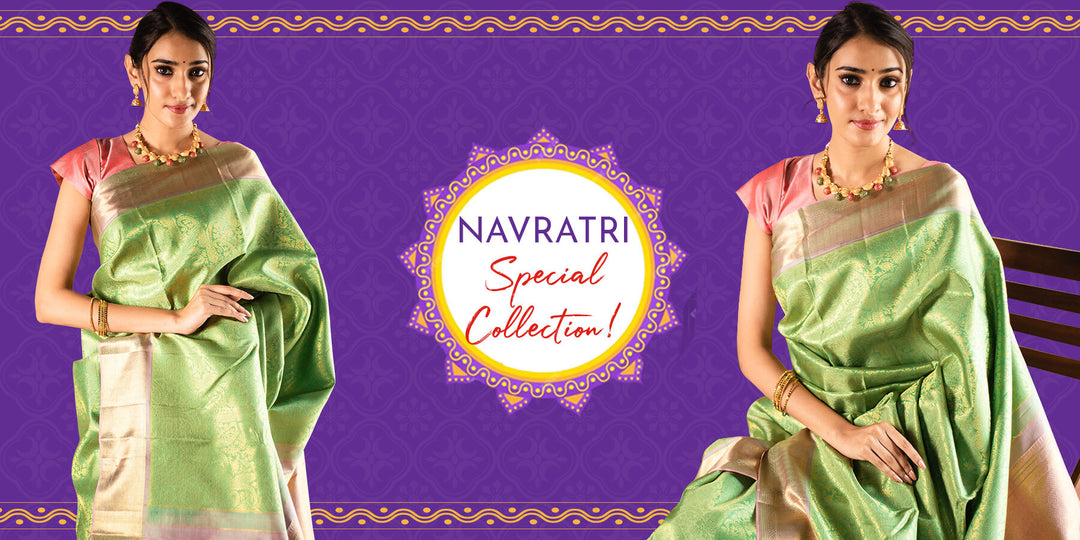"Crafted with Love: India's Enduring Tradition of Handloom Weaving"

On this Handloom Day, let's explore the profound intertwining of Handloom Weaving with the cultural fabric of the Indian Subcontinent. From ancient times to the freedom movement and present-day India, this timeless craft has left an indelible mark on our heritage.
Archaeological Studies have shown compelling evidence of cotton & silk fabrics dating as far back as the Indus Valley Civilization. Remnants of these fabrics have been discovered in various artificats, providing valuable insights into the practice of weaving in the Indian Subcontinent.
Royal Patronage

Handloom weaving flourished under the patronage of Indian kings and emperors. The art of weaving was nurtured in royal courts, with weavers creating exquisite textiles for the nobility. Elaborate fabrics adorned with precious metals and gemstones were woven to reflect the opulence of the ruling elite.
Regional Aesthetics in Weaving

The esteemed Kanjivaram weaving tradition owes much of its flourishing legacy to the patronage and support received from both the Pallava Kings and the illustrious Krishna Deva Raya. Their encouragement paved the way for the emergence of captivating temple-inspired designs that have become hallmarks of Kanjivaram sarees. Exquisite motifs like the majestic yazhi and graceful annapakshi reflect the deep influence of temple architecture and mythology on these handwoven marvels.

In stark contrast, the Banarasi weaving tradition found favour among the Mughal rulers, who held a deep appreciation for its unparalleled craftsmanship. Under their esteemed patronage, motifs like the elegant paisleys and intricate floral vines, known as Jangla, took center stage in the design of Banarasi sarees. These motifs exude a regal charm, mirroring the grandeur of the Mughal courts and adding a timeless allure to these opulent creations.
Both Kanjivaram and Banarasi sarees stand as exquisite examples of India's rich weaving heritage, each carrying a distinct cultural narrative woven into their very threads.

Fabric of Freedom
Handloom weaving underwent a challenging period during British rule, marked by the impact of industrialization and the East India Company's control over purchases.
However, after enduring this difficult phase, handloom fabrics witnessed a remarkable revival during India's struggle for independence. Mahatma Gandhi played a pivotal role in this resurgence by promoting the use of Khadi (handspun & handwoven cloth) as a symbol of self-reliance and resistance against British colonial rule. The Khadi Movement played a significant role in reigniting interest in handloom weaving and reinstating its cultural significance.

Handlooms in Contemporary India
While the handloom movement witnessed a resurgence during India's struggle for independence. it did face various challenges and fluctuations in the subsequent years. Between the 1980s and 2000s, factory-made clothing with artificial fibers dominated the market, posing a significant threat to traditional handloom textiles.
Nonetheless, over the past 15 years, there has been a notable upswing in the popularity of handloom fabrics. This resurgence can be attributed to several factors. Firstly, there is a renewed interest in preserving cultural heritage, with people eager to embrace and support traditional craftsmanship. Many individuals, particularly women, are now willing to invest in handloom products, appreciating the unique value and history each piece carries.

Designers have also played a pivotal role in this revival, infusing fresh ideas and innovation into handloom textiles. They have expanded the repertoire of handloom beyond the classic sarees, salwar suits, and dhotis. Handloom fabrics are now utilized in creating contemporary dresses, kurtas, handbags, and other readymade garments, making them more relevant and versatile for modern lifestyles.
This shift in design and usage has made handloom fabrics increasingly appealing to a broader audience, transcending age and cultural boundaries. Moreover, the eco-friendly and sustainable aspects of handloom have resonated with environmentally conscious consumers, further contributing to its growing popularity.
Final Thoughts
In conclusion, while the handloom movement faced challenges over the years, it has experienced a significant revival recently. The confluence of cultural appreciation, willingness to invest in heritage, and innovative designs have breathed new life into the traditional craft, making handloom fabrics not only culturally rich but also relevant and adaptable for contemporary fashion sensibilities.










Leave a comment